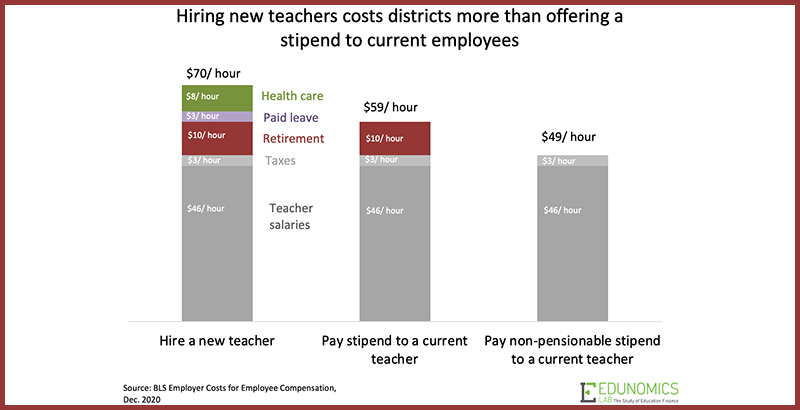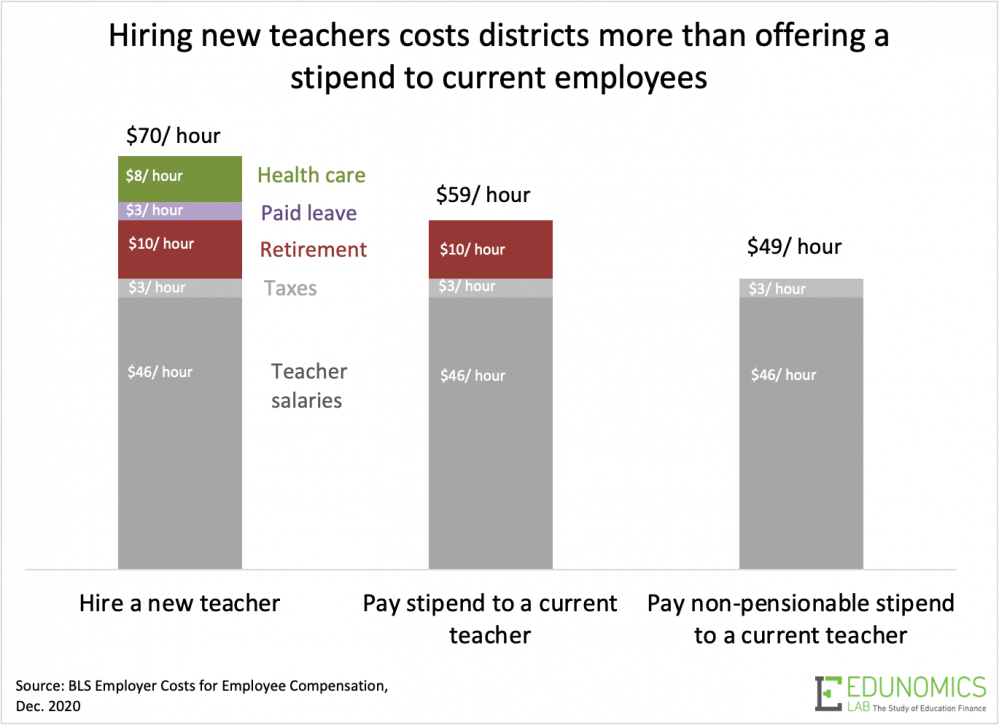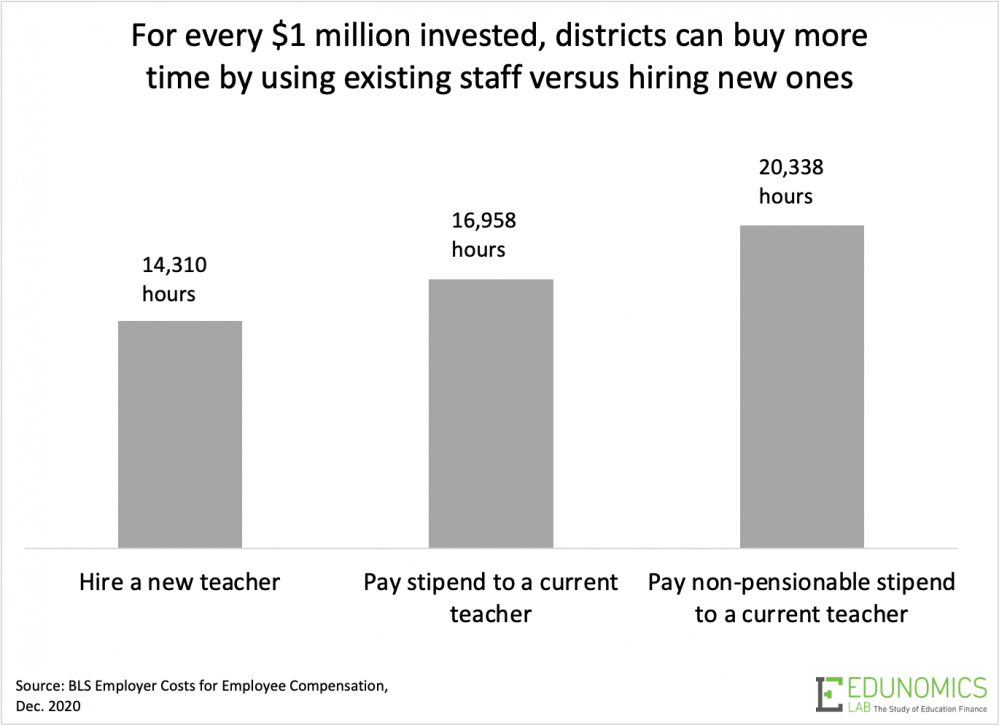

Sign up for our free newsletter and start your day with in-depth reporting on the latest topics in education.
Give Today!Get essential education news and commentary delivered straight to your inbox. Sign up here for The 74’s daily newsletter.
T he $190 billion in federal relief funds presents school district leaders with a conundrum. They might want to add time for students, whether through tutoring, summer school or an extended school day or year, but this is one-time federal money, and programs like these often entail taking on recurring labor costs.
So how do districts get more labor without locking themselves into long-term financial obligations?
As my colleague Marguerite Roza has suggested, one option is to start by offering existing teachers a stipend to take on additional hours. Some might want the extra paid work, and, since districts have already paid for a full year of health benefits, the hourly rate would be less than hiring a new employee would cost.
Let’s do the math.
According to the latest data from the Bureau of Labor Statistics, districts spend about $70 per hour per teacher. But teachers receive an average of only $46 per hour in salary; the rest goes mainly toward benefits.

That presents districts with an opportunity. Teachers, for example, are more likely than other workers to take on second jobs. This year has been hard and stressful, but some educators might be willing to provide additional learning time for students and appreciate the extra income.
Our Edunomics Lab Certificate in Education Finance program asks district leaders to run the per-hour calculations to see how stipends for current staff can help them get more for their dollar than making new hires. That’s because while most teachers work a 10-month contract, district health benefits cover a full year. If a district were to add time for students by offering stipends to existing staff, those would not come with any new health care costs.
That represents a significant saving, and it offers a way for districts to provide significantly more services for students. If a district hired new staff with health benefits, for every $1 million the district spent, it could afford to “buy” 14,310 hours of programming. If instead the district used existing teachers at the same hourly rate, it could offer an additional 2,648 hours of programming to students (18.5 percent more) for the same $1 million cost.

Get stories like these delivered straight to your inbox. Sign up for The 74 Newsletter